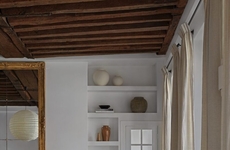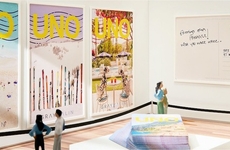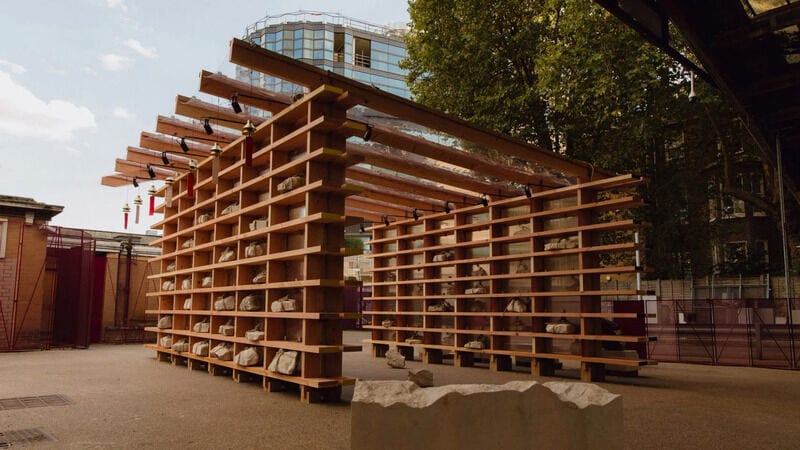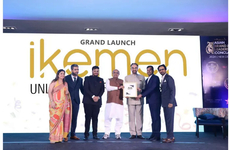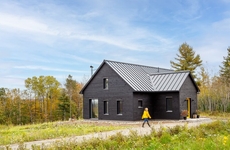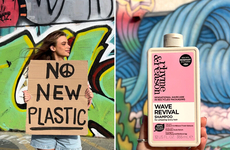
Webb Yates Creates the Off the Shelf Pavilion for London Design
Amy Duong — September 20, 2024 — Art & Design
Rio Kobayashi works together with engineering studio Webb Yates to create his first pavilion -- the Off The Shelf installation is a dreamed-up variation of his childhood home in Japan and it is currently on display as a part of the London Design Festival. The name suggests that it uses off-the-shelf materials and all of the components were notably unaltered so that they can be returned to the manufacturers to serve other purposes once the installation is taken down.
The co-founder of Webb Yates, Steve Webb explains the process to Dezeen, stating "So many pavilions end up in the bin. So we really wanted to use things that were Off The Shelf, clip them together and then take them apart again." Rather than using screws or joints, the team formed a tensioning system that connects the components in place so it is easily taken apart. He continues, "We're using techniques that you would use for bridges. Post-tensioning is not something you use for furniture or even for normal buildings."
Image Credit: Christian Cassiel
The co-founder of Webb Yates, Steve Webb explains the process to Dezeen, stating "So many pavilions end up in the bin. So we really wanted to use things that were Off The Shelf, clip them together and then take them apart again." Rather than using screws or joints, the team formed a tensioning system that connects the components in place so it is easily taken apart. He continues, "We're using techniques that you would use for bridges. Post-tensioning is not something you use for furniture or even for normal buildings."
Image Credit: Christian Cassiel
Trend Themes
1. Sustainable Pavilion Design - The use of off-the-shelf materials in pavilion construction emphasizes a shift towards sustainability and reusability in architectural designs.
2. Post-tensioning Techniques in Architecture - Innovative application of post-tensioning techniques in temporary structures presents new possibilities for modular and adaptable architectural solutions.
3. Deconstructible Installations - Pavilions designed for easy disassembly highlight the growing trend of temporary yet impactful architectural installations.
Industry Implications
1. Architecture and Engineering - This industry benefits from incorporating advanced construction techniques, resulting in innovative and recyclable design solutions.
2. Sustainable Manufacturing - By creating reusable components, the sustainable manufacturing sector can produce flexible materials for multiple lifecycle applications.
3. Event and Exhibition Design - Utilizing readily disassembled structures aligns with the needs of event and exhibition industries for temporary, movable setups.
2.9
Score
Popularity
Activity
Freshness




